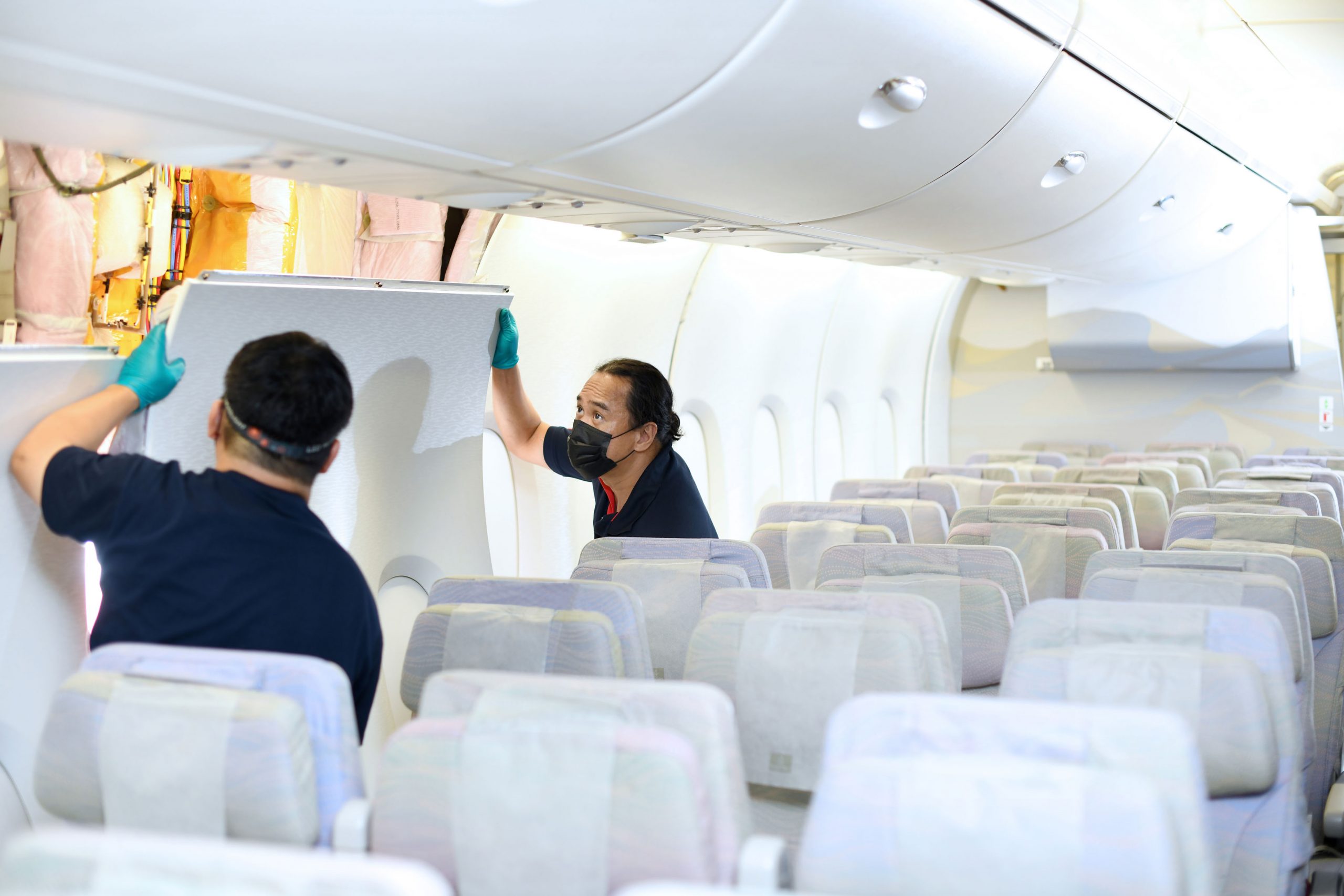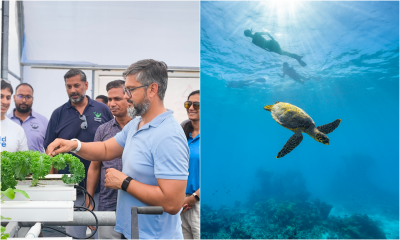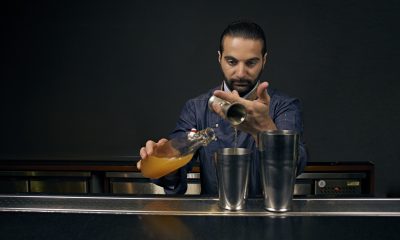International
Pandemic offers scientists unprecedented chance to ‘hear’ oceans as they once were

NEW YORK (Reuters) – Eleven years ago, environmental scientist Jesse Ausubel dreamed aloud in a commencement speech: What if scientists could record the sounds of the ocean in the days before propeller-driven ships and boats spanned the globe?
They would listen to chit-chat between blue whales hundreds of miles apart. They would record the familiar chirps and clicks among a pod of dolphins. And they would do so without the cacophony of humankind – and develop a better understanding of how that undersea racket has affected sea life.
It was a flight of fancy, more aspirational and inspirational than a plan.
At first, Ausubel says, he (very fancifully) suggested a year of a “quiet ocean,” during which shipping would come to a halt, or at least slow down. Then a month. And finally, just a few hours.
As far-fetched as even that was, a small fraternity of about 100 similarly curious scientists picked up on his vision. In 2015, they published a plan of how to conduct the International Quiet Ocean Experiment, should the opportunity ever present itself.
When the COVID-19 pandemic sparked an extreme economic slowdown in March, sending cruise ships to port and oil tankers to anchor, they mobilised. Last month, they finished cobbling together an array of 130 underwater hydrophone listening stations around the world – including six stations that had been set up to monitor underwater nuclear tests.
“Well, we’re not excited that COVID happened, but we’re happy to be able to take advantage of the scientific opportunity,” says Peter Tyack, a professor of marine mammal biology at the University of St. Andrews in Scotland and one of the early instigators. “It would have just been impossible any other way.”
Tyack says the recordings should give scientists a never-before glimpse of the ocean with little human interference. It’s a bit like looking at the night sky if most of the world’s lights were turned off.
He says some research suggests large whales have adapted to man-made noises by raising their voices and their pitch. He speculates that many species also have moved to quieter regions of the world so they can find food, and one another, more easily.
Generally, the group will be looking to see if the whales and other sea mammals adapt to the quieter oceans by lowering their volume, communicating more efficiently or shifting their habitat.
Some of the project’s listening posts are connected to land via cables, but many of them are not and the recordings have to be retrieved by ships. Now that economies around the world are reopening, the quiet oceans group has started gathering the soundscape data.
It won’t be until the end of the year, however, that the researchers will have cleaned up the recordings and can compare them to previous years for changes in human and animal noise alike.
The focus of the serendipitous project is on the so-called SOFAR (Sound Fixing and Ranging) channel, a naturally occurring ocean stratum in which sound can travel long distances.
It’s where large baleen and fin whales sing for a lover or join in a friendly chorus. But it’s also where the human racket from fishing boats, tankers and motorboats, as well as oil rigs and wind turbines, gets trapped and then propagated around the world.
Sound waves travel farther and faster in water than in the air. That’s especially true of the bass notes of a whale’s song, the low grinding of a ship’s shaft, even the rumble of a nuclear explosion. Those sounds can travel hundreds or even thousands of miles, bending around the planet by bouncing up and down in the SOFAR channel, a kilometer-deep band of water.
The 130 recording stations used by the researchers are a hodgepodge of locations and sensitivity in that channel. Part of the planning process includes identifying and recruiting partners who operate listening stations run by governments, universities, environmental groups and other agencies.
The humblest station is four kilometres off the Spanish coast and operated by the Polytechnic University of Barcelona. It records sound up to 10 kilometres away. At the other extreme are six stations, each with multiple hydrophones, operated by the Vienna-based Comprehensive Nuclear Test Ban Treaty Organisation. Those stations can not only pinpoint underwater nuclear explosions anywhere on the planet, but also eavesdrop on whales an ocean away.
Ausubel, the director of the Program for the Human Environment at New York’s Rockefeller University, says he and his fellow dreamers were ready, even if their plan seemed unrealistic.
“We spent a lot of time planning: How would you try to set up this kind of study, even though we realized that it wasn’t really practical?”
But the plan, Ausubel says, anticipated moments of opportunity such as an extreme weather event, not a pandemic.
“Immediately after a hurricane or a typhoon, it’s very quiet for a day or two because of the fear of large waves or storms,” he says. “Fishermen don’t go out to sea; shipping routes are changed; oil and gas platforms may be shut down.”
Amid the pandemic and the lockdowns that ensued, major ports in the Northeast of the United States, such as Boston, Philadelphia, New York and Baltimore, saw a nearly 50% drop in ship and boating traffic in April compared to the same month in 2019, according to MarineTraffic, a ship-tracking firm.
Large European ports, such as Lisbon, Antwerp, Le Havre and Rotterdam, saw about a 25% drop in the same month, the firm said.
“I think there’ll be some variability in different places, which is quite important to test this,” Tyack says. “It isn’t really a controlled experiment, so it’s better to have 50 different sites, some of which noise is much lower and some of which it isn’t, to be able to look at the impact of the reduction.”
Still, Ausubel says he already sees anecdotal evidence that marine mammals are changing their behavior.
“There have been observations near Vancouver of orcas coming closer to the city than was customary, and off Scotland,” he says.
Orcas, dolphins and humpback whales, which communicate using high-frequency sounds that don’t travel particularly far, often congregate in shallower waters. They may have moved closer to once-busy ports and harbors, he speculated.
The group hopes to publish a paper this summer that gathers anecdotal reports of changes observed in recent months. At the end of the year, a group led by Tyack will report how much the volume went down. And finally, next year, the researchers aim to publish a full analysis of how the reduction in sound changed the behavior of marine mammals and other marine life.
“What did the pre-industrial ocean sound like,” Tyack says, “and how are marine ecosystems going to respond to that?”
Reporting and photo: Reuters
International
Nika Zorjan’s ‘V Postelji’ music video showcases timeless beauty of Maldives

Released just three weeks ago, Nika Zorjan’s latest music video, ‘V Postelji’ (meaning “In Bed”), has captivated audiences with its stunning cinematography set against the breathtaking backdrop of the Maldives. Directed by videographer Niko Karo, who accompanied Nika to film the video, the project was organised by Moji Maldivi, an agency based in Slovenia dedicated to promoting the Maldives as a premier holiday destination in Balkan region.
The video beautifully captures Nika strolling through serene pathways shaded by iconic coconut palm trees at Villa Park, later walking along the sun-kissed beaches of Villa Nautica, and finally enjoying the golden sunset on a bed at the beach of Furaveri Maldives. Each scene showcases the natural beauty and tranquil ambiance of the Maldives, enhancing the emotional depth and visual splendour of the music video.
Nika Zorjan, renowned as a Slovenian pop star and Eurovision contestant, has also gained fame for her cover songs, including her most popular rendition of Sia’s Cheap Thrills, which has amassed nearly 50 million views on YouTube, with over 60 million total views on the platform. “Shooting a video in the Maldives is heavenly,” she added. Filmed in one of the world’s most captivating tourist destinations, the Maldives serves as more than just a scenic backdrop; it becomes an integral part of the video’s narrative.
V Postelji not only showcases Nika Zorjan’s musical prowess but also pays homage to the Maldives’ timeless allure and cultural richness. The video has resonated deeply with audiences, garnering praise for its artistic vision and the mesmerising beauty of the Maldivian landscape. The lush greenery, crystal-clear waters, and pristine beaches depicted in the video create a sense of paradise that complements the song’s evocative lyrics.
As viewers continue to immerse themselves in the captivating visuals and emotive melodies of V Postelji, it reinforces the Maldives’ reputation as a destination where natural beauty and tranquility converge effortlessly. Nika Zorjan’s collaboration with Niko Karo underscores their shared appreciation for the Maldives’ serene ambiance and its ability to inspire creativity and emotional expression. This partnership, facilitated by Moji Maldivi, highlights the agency’s dedication to showcasing the Maldives as an unparalleled holiday destination to the Balkan market.
Featured
Emirates undertakes largest known fleet retrofit project

Emirates has kick-started its plans to upgrade the entire interior cabins of 120 Airbus A380 and Boeing 777 aircraft – two of the largest commercial aircraft types in service today.
This ambitious project, representing a multi-billion dollar investment to ensure Emirates’ customers “fly better” for the coming years, officially commences in November and is managed entirely by Emirates’ Engineering team.
The target is to completely retrofit four Emirates aircraft from start to finish every month, continuously for over 2 years. Once the 67 earmarked A380s are refreshed and back in service, 53 777s will undergo their facelift. This will see nearly 4,000 brand new Premium Economy seats installed, 728 First Class suites refurbished and over 5,000 Business Class seats upgraded to a new style and design when the project is complete in April 2025.
In addition, carpets and stairs will be upgraded, and cabin interior panels refreshed with new tones and design motifs including the iconic ghaf trees which are native to the UAE.

No other airline has handled a retrofit of this magnitude in-house, and there’s no blueprint for such an undertaking. Therefore Emirates Engineering teams have been planning and testing extensively, to establish and streamline processes, and identify and address any possible snags.
Trials began on an A380 in July, where experienced engineers literally took each cabin apart piece-by-piece and logged every step. From removing seats and panelling to bolts and screws, every action was tested, timed and mapped out. Potential impediments to completing the installation of Emirates’ new Premium Economy Class or the retrofit of the remaining three cabins in just 16 days were flagged and documented for expert teams to review and address.
As part of the programme, new purpose-built workshops will be set up at Emirates Engineering to repaint, re-trim and re-upholster Business and Economy Class seats with new covers and cushioning. First Class suites will be carefully disassembled and sent to a specialised company to replace the leather, arm rests and other materials.
From the trials, Engineers discovered several unexpected solutions for instance: that existing food catering trucks could be easily repurposed to move parts destined for refurbishment from the aircraft to the workshop for their refresh, as these vehicles had doors of the right width and offer sufficient space.
Until the retrofit programme starts in earnest in November, a cross-disciplinary team has been assembled to regularly review the planning process, address any issues, and track updates on various aspects of the project such as procurement, staffing, and training.
Emirates’ new Premium Economy cabin class, which offers luxurious seats, more legroom, and a service to rival many airlines’ business offering, is currently available to Emirates customers travelling on popular A380 routes to London, Paris, Sydney. More customers will be able to experience the airline’s new Premium Economy cabins starting from year end, as the retrofit programme picks up momentum.
Featured
Eleanor helps over 30 Maldives hotels elevate guest services

Eleanor has been named as one of the top 10 concierge software providers globally.
Based on accurate, timely reviews from real users, the HotelTechAwards rank the world’s best hotel software firms and products and it also provides hoteliers direct access to a growing network of hotel technology professionals and decision-makers.
“The guest experience is the cornerstone of our platform. Our unified resort wide solution, Eleanor, has been built for resorts off the back of many years working in the industry and addresses the needs of both Sales and Marketing departments and perhaps just as importantly, the operational requirements of the team on the ground at the property. The days of resorts working with disjointed systems are now behind us,” says Darren Caple, co-founder and CEO.
“We are on a mission to make the guest’s resort experience as easy and as frictionless as possible. Whereas traditional providers in the market have come at this purely from a guest communication perspective, our background in resorts has allowed us to combine this basic requirement with the streamlining of operational processes. The result is truly a resort wide solution that removes the need for countless different systems to be deployed.
Eleanor allows resorts to deliver consistent, superior service levels to guests across all stages of their journey with contactless features helping to alleviate sensitive touch-points in the post pandemic period. More than 30 properties in the Maldives use our Eleanor platform to help butlers and guest services elevate the guest experience. These properties are seeing an increase in incremental revenue by over 30% and operational efficiencies of 600+ man hours per month. We are also beginning to roll out the platform in some Caribbean properties!”
Eleanor is making waves in the hospitality industry by pushing the conventional limits of what a resort guest app can achieve through its unique ability to facilitate direct bookings for services and activities. The traditional ‘request to book’ feature that is common amongst almost all other hotel apps is removed by a power booking and operational platform sitting at the heart of the solution that covers all the resorts’ departments. It’s this module which realises enormous operational benefits and insights for the resort.
“We, at Eleanor, are humbled and honoured that our clients have provided such positive reviews. Feedback from our clients, partners and hoteliers are incredibly valuable for us and we will continue to improve our offering and services”, said Caple.
To celebrate this success, Eleanor is currently offering resorts a free one month trial, together with free setup and training and discounted monthly fees.
Eleanor, founded in 2018 and has its headquarters in the United Kingdom. Created from over 15 years of hands-on expertise, Eleanor allows resorts to deliver consistent, superior service levels to its guests across all stages of their journey with contactless features helping to alleviate sensitive touch-points in the post pandemic period. Eleanor also helps to unlock operational efficiencies and boost incremental revenue and guest loyalty.
Hotel Tech Report’s Best Concierge Software 2022 Runner Up, reviewed as a preferred and reliable hotel software product by the global hotelier community.
For more information, visit www.eleanorapp.com.
-

 Entertainment1 week ago
Entertainment1 week agoHulhule Island Hotel names 2ofus as New Year’s Eve 2026 headline act
-

 Cooking1 week ago
Cooking1 week agoThe St. Regis Maldives Vommuli Resort welcomes Chef Renzi Gianluca for Tastemaker series collaboration
-

 News1 week ago
News1 week agoThe Standard, Maldives achieves Green Globe Certification after rigorous audit
-

 Entertainment1 week ago
Entertainment1 week agoAward-winning singer Nicole Scherzinger to appear at One&Only Reethi Rah’s New Year’s Eve celebrations
-

 News7 days ago
News7 days agoSeaside Collection opens .Here, an ultra-private two-island resort in Maldives
-

 News1 week ago
News1 week agoBandos Maldives marks 53 years of hospitality with guest celebration
-

 Cooking1 week ago
Cooking1 week agoTAPASAKE Maldives marks first anniversary with Luca Cinalli guest mixology night
-

 Action1 week ago
Action1 week agoDenise Höfer returns to The Nautilus Maldives for four-day padel programme in March 2026









